#48 in Vietnam
Popular Cơm Cháy Variations

Cơm Cháy Chà Bông

Cơm Cháy Kho Quẹt
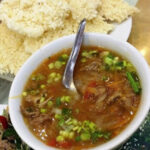
Cơm Cháy Thịt Dê

Cơm Cháy Hải Sản

Cơm Cháy Tràng An

Bò Kho Cơm Cháy
Cơm Cháy: Ingredients and Preparation
Main Ingredients
Main Cooking Method
Preparation Process
Cơm Cháy: A Deep Dive
Cultural Significance
Taste
Texture
Aroma
Color
Serving Style
Serving Temperature
Accompaniment
Occasions
Seasons
Special Diets
Calories
Popularity
Popular Similar Dishes
- Nurungji
- Socarrat
- Tahdig
- Guoba
Popular Dining Area
Cơm cháy (Vietnamese crispy rice) is a traditional Vietnamese dish that consists of crispy rice crusts formed at the bottom of the pot when cooking rice. It’s known for its golden brown color, crunchy texture, and slightly toasted flavor.
This dish features a history of over 100 years, believed to have been invented during the French colonial period by a young man named Đinh Hoàng Thăng.
Traditionally, it involves a meticulous process of mixing fragrant rice with dry rice and cooking it in a thick cast-iron pot, usually over a wood fire.
The bottom layer of rice that sticks and toasts to the pot is then separated, dried, and preserved in plastic bags. For serving, it’s typically fried until crisp and often accompanied by pork floss and a savory goat meat sauce.
Nowadays, cơm cháy is mass-produced and packaged for convenience, readily available in stores nationwide, making it an accessible treat or gift for tourists.
I’ll take you through the dish’s features, its history, the different types, the pros and cons, questions people often ask, and dishes that are similar to it.
Key Points
Cơm Cháy Images
What Is The History of Cơm Cháy?
Cơm cháy is a crunchy rice dish from Vietnam, with a special story from Ninh Bình. A man named Đinh Hoàng Thăng moved from Ninh Bình to Hanoi in the late 1800s to work at a Chinese-owned restaurant.
When he couldn’t marry the owner’s daughter, he went back home. Using what he learned, Thăng opened his own place serving cơm cháy. His former boss later partnered with him and even let him marry his daughter.
The dish became popular because Ninh Bình had lots of good rice, which was important for making cơm cháy. The area’s growth in tourism and the use of local goat meat, which is lean and tasty, helped make cơm cháy well-known.
Many restaurants in Ninh Bình now sell cơm cháy with alterations, but Đinh Hoàng Thăng’s family recipe is considered the best. It’s special because of the way it’s made and the sauce that goes with it.
What Are Famous Variations of Cơm Cháy?
Here are some variations that “cơm cháy” is prepared and enjoyed in Vietnamese cuisine:

Cơm Cháy Chà Bông
Crispy rice topped or served with pork floss.

Cơm Cháy Kho Quẹt
Crispy rice served with a thick, sweet, and savory dipping sauce made from fish sauce, sugar, and sometimes pork greaves.

Cơm Cháy Thịt Dê
Crispy rice with mountain goat meat, a delicacy from Ninh Bình.

Cơm Cháy Hải Sản
Cơm cháy from Hải Phòng is a unique take on the traditional crispy rice dish, topped with fresh, local seafood and served with a special sauce.

Cơm Cháy Tràng An
A specialty from the Tràng An area in Ninh Bình, usually crispy rice with a specific local taste or toppings.
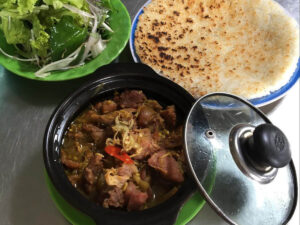
Bò Kho Cơm Cháy
Crispy rice served with Vietnamese braised beef, likely a specialty from the Củ Chi region.

Gà Nướng Cơm Cháy
Crispy rice served with grilled chicken
These diverse variations of cơm cháy highlight the dish’s versatility and the pros and cons of cơm cháy such as its adaptability to different toppings but also its potential richness, which may not suit all palates.
Pros and Cons of Eating Cơm Cháy
Pros
Cons
Equally important, the frequently asked questions warrant your attention.



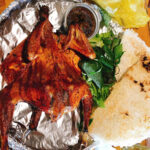
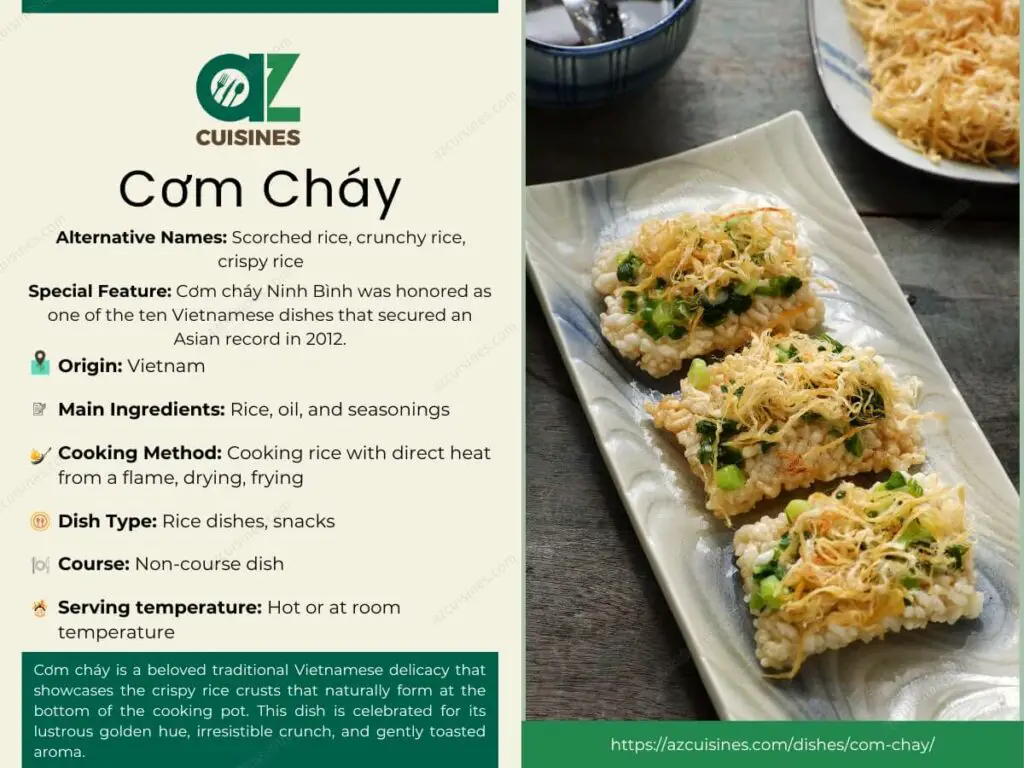


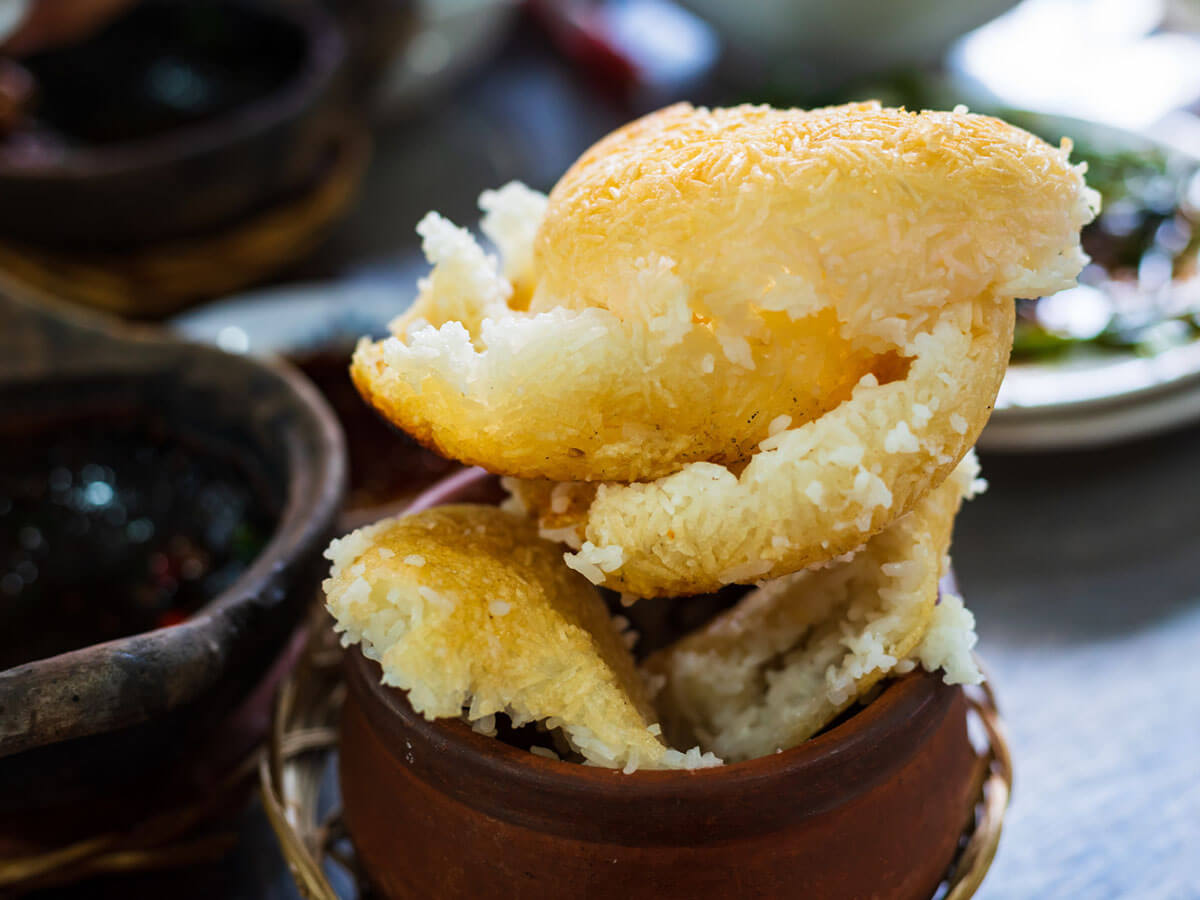



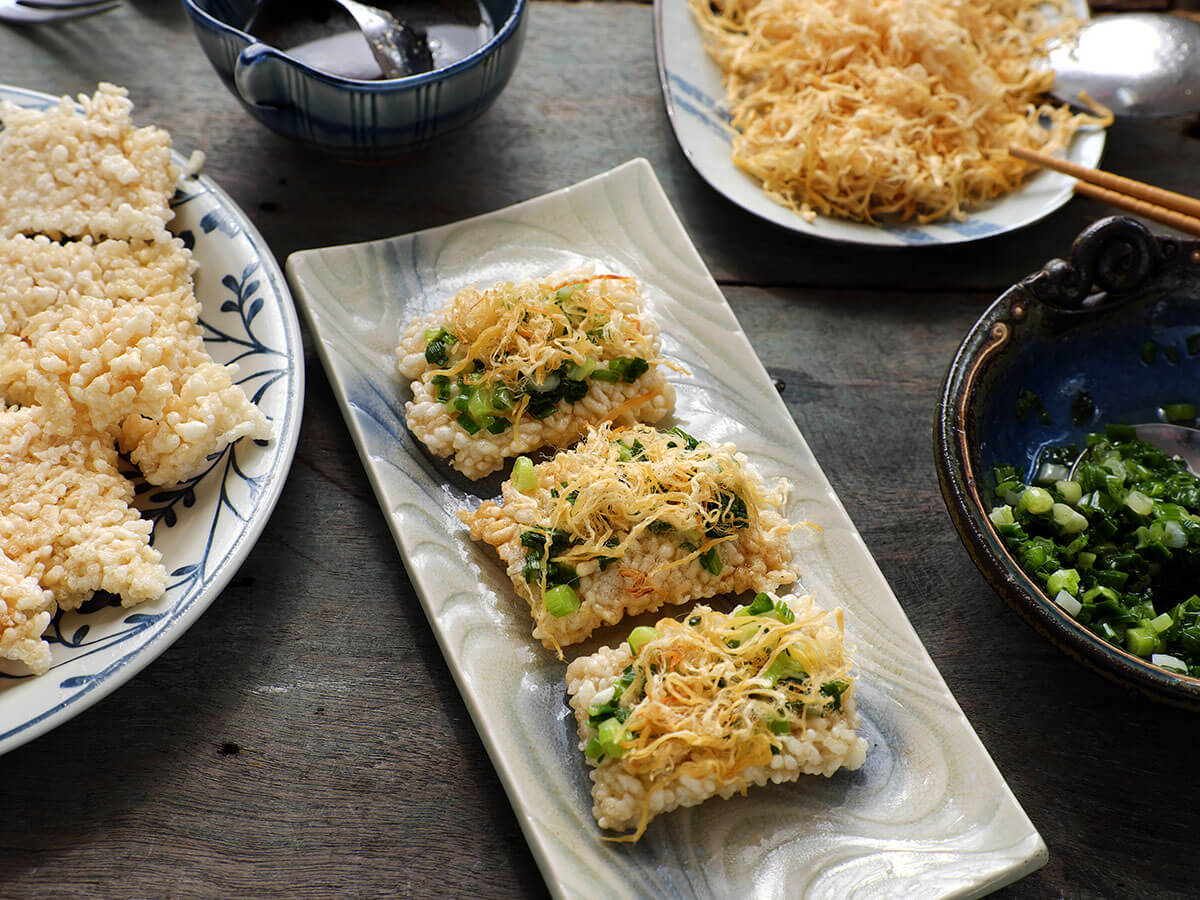
Truc Tran (Kris)
Senior Food Editor
Expertise
Home Cooking, Meal Planning, Recipe Development, Baking and Pastry, Food Editor, Cooking-video Maker, Vietnamese Food Evaluation Expert
Education
Truc Tran (Kris), an experienced food writer and editor, is great at exploring and describing global cuisines, from simple street food to fancy dining. In her writing, she skillfully mixes different flavors, cooking methods, and culinary traditions, showing the unique character of various cultures through their food and drinks. On azcuisines.com, Kris highlights her knowledge, especially in Asian cuisine and worldwide traditional dishes.